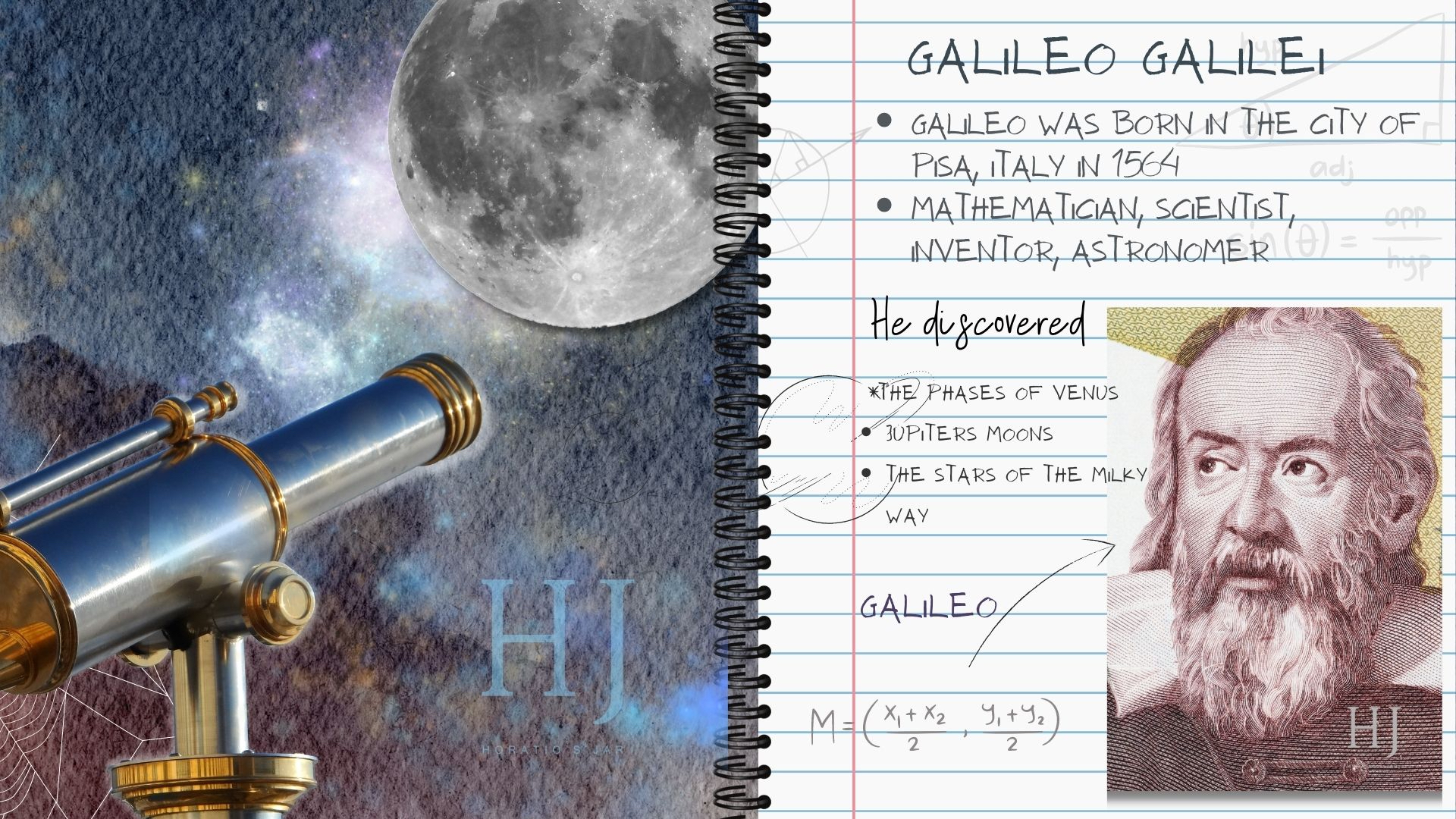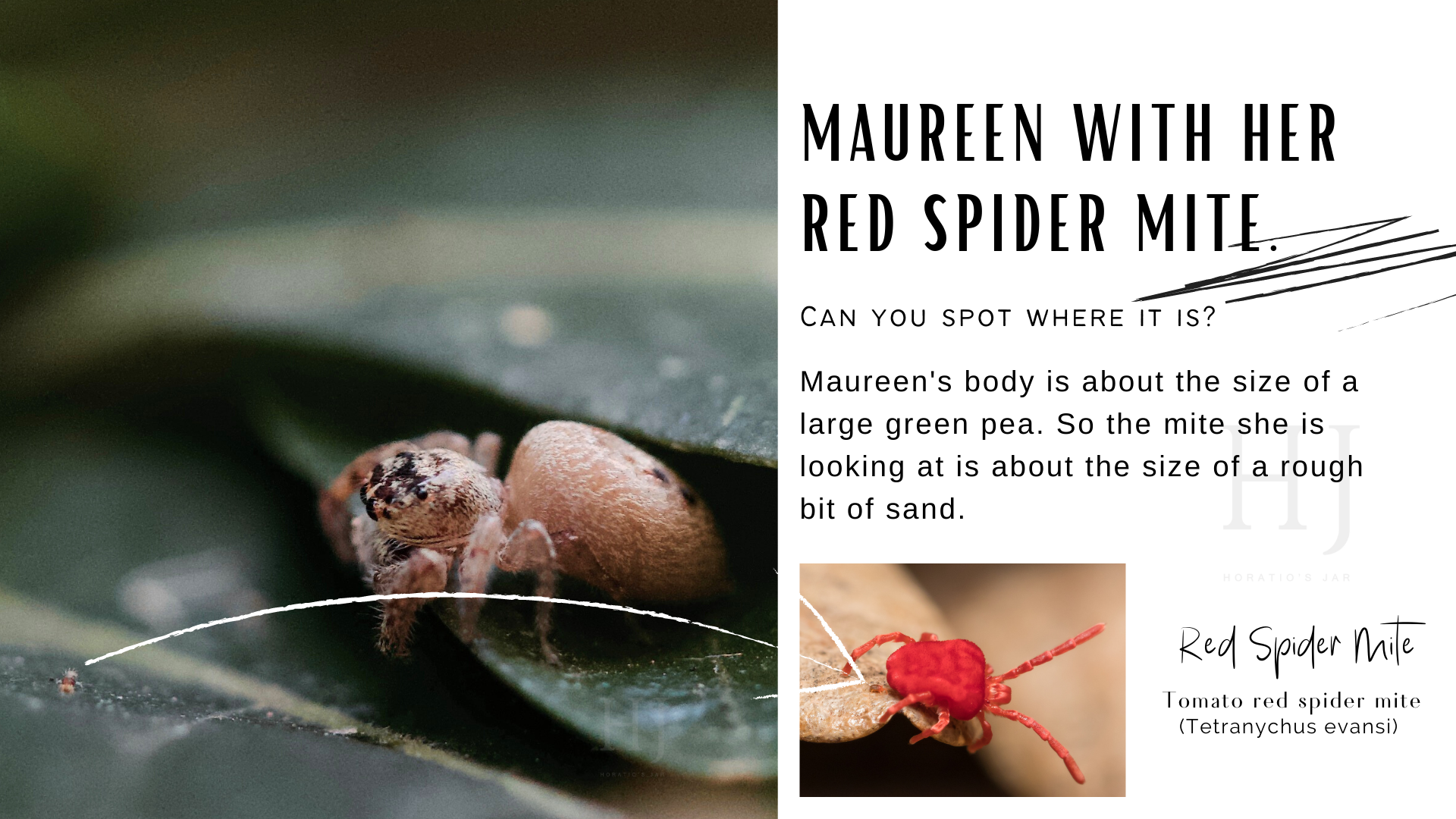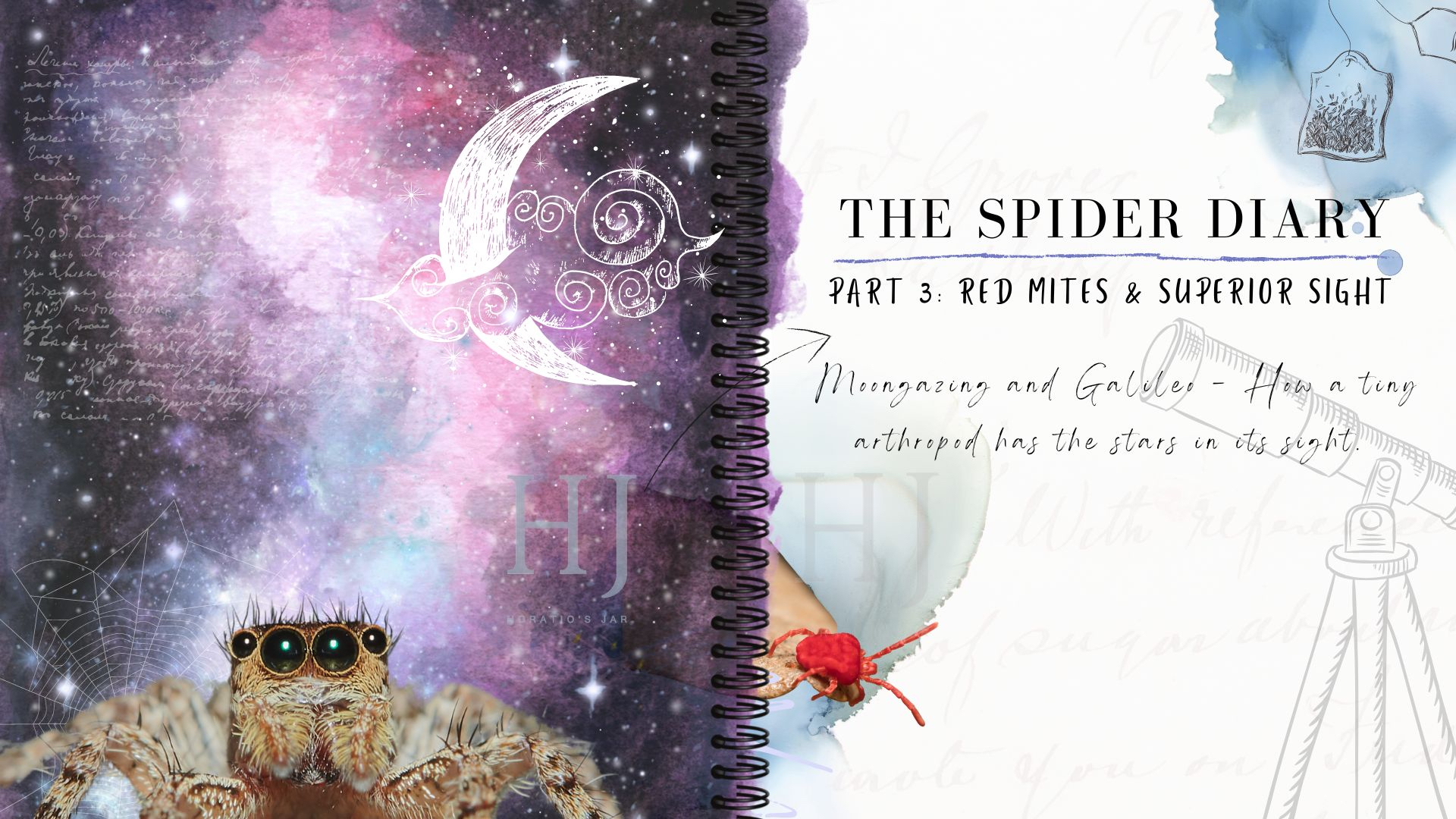Published by: Digital Schools
The Spider Diary, Part 3: Red Mites & Superior Sight
Written By Emily Rack, Horatio's Jar
So here we are – week three of our exploration into the world of Maureen, our lovely Garden Jumping Spider.
By the way, Maureen is an Opisthoncus nigrofemoratus (if you were wondering), and she is relatively common in most parts of Australia.
Our Maureen lives an extraordinary life, the life of a hunter. She doesn’t build a web and hang about all day; instead, she uses her superb eyesight and freakish ability to jump considerable distances to pounce on unsuspecting prey.
She lives and roams in her leafy domain, exploring the world around her in great detail with her eight shiny eyes.

Unlike any other spider species, the Jumping spiders have a vision so advanced it is equivalent to a cat or small dog and has the same design as a Galilean telescope, a single tube with a lens on each end. Only three species of animal have this type of eye; a falcon, chameleon, and the Jumping spiders.
Jumping spider’s eyes have a funnel 1 millimetre long with a lens at each end like a telescope. And just as Galileo intended his contraption to bring the night sky into view, they too can see the moon and possibly even a galaxy or two.



Jumping spiders are superior to all other arachnids – and it isn’t only because their eyesight is off the charts; They have measurable intelligence that has put them in a class of their own.
The jumping spider has a brain that can fit on the end of a pin, yet it can strategize, form mental images of complex landscapes, make choices, count, solve problems and interact with humans.
Behaviourally they have been compared to domestic cats and dogs and share responses to stimuli that match a human toddler. A jumping spider can experience surprise and may have emotions. Jumping spiders can also hear, which until recently was believed impossible – as spiders don’t have ears.
Maureen’s kind can see in colour, green is the favourite, and have been witnessed by researches watching nature documentaries.



Like the rest of her family, Maureen is an ambassador for arthropods, arachnids, and microscopic life. Dr Seuss was onto this a long time ago when he wrote the story ‘Horton’s hears a Who!’.
With personalities that sparkle and shine and abilities to think, plan and learn that outclass species a million times their size, these tiny little people invite us all to question our beliefs, behaviour, and place in the world.

As for Maureen's Mites
Although spiders can get mites and parasites, these tomato red specks are not bothersome to her. Maureen doesn’t eat spider mites, and I am guessing as neighbours on the same tree, it might be a circumstance they seem to follow her about.
But who knows for sure?
Yesterday you probably thought that all spiders function about the same: hunting, killing, eating, breeding and terrifying you from the other side of the room. Now you know that’s not the case.
Perhaps next time you see a spider, instead of screaming at it and trying to kill it with a broom, you might instead introduce yourself and invite them for tea?
By the way, Maureen’s babies have made it into the world.
As I wrote the last sentence just now, a baby spider wandered across the window blind at the back of my desk.



